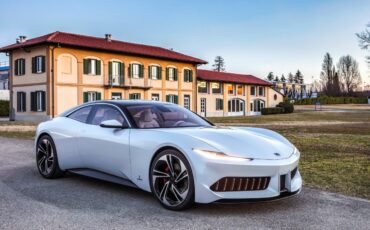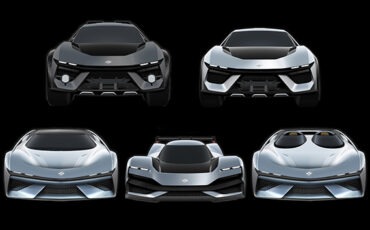
Hon Hai Technology Group (Foxconn), the world’s largest tech manufacturer and service provider, has unveiled its latest electric vehicle model, the Model D, developed in collaboration with the renowned Italian design house, Pininfarina. The reveal took place at the fifth annual Hon Hai Tech Day (HHTD) in Taipei, where Foxconn also presented the Model U, a medium-sized electric bus designed for urban mobility solutions.
Expanding Foxconn’s Electric Vehicle Lineup
Foxconn’s push into the electric vehicle (EV) market is accelerating. The Model D, a Lifestyle Multipurpose Utility Vehicle (LMUV), is the newest addition to their lineup, following the earlier Model E sedan and Model B crossover. All three vehicles were meticulously crafted at Pininfarina’s prestigious design studio in Cambiano, Italy, highlighting the deepening partnership between the Taiwanese tech giant and the legendary Italian design firm.
Silvio Angori, CEO of Pininfarina, expressed his pride in the ongoing collaboration, stating, “We are thrilled to present a new model that embodies the best of Pininfarina’s design expertise, further strengthening our strategic partnership with Foxconn. For nearly 95 years, Pininfarina has led the way in blending art and technology, and this partnership with Foxconn is a natural convergence of our cultures of excellence and innovation.”

Advanced Features and Design of the Model D
The Model D is designed to merge the best attributes of SUVs and MPVs, offering versatility and cutting-edge technology. At 5.1 meters long and with a wheelbase of 3.2 meters, it provides spacious, comfortable interiors while maintaining a sleek, aerodynamic exterior. The vehicle features active air suspension to enhance driving stability, allowing height adjustments from 15 mm to 25 mm. The bodywork incorporates specially designed air ducts and intakes that reduce aerodynamic drag, resulting in an impressively low drag coefficient of 0.23.
The exterior design of Model D, developed alongside Pininfarina, reflects a modern and athletic aesthetic while delivering a high level of functionality. Felix Kilbertus, Chief Creative Officer of Pininfarina, described the design approach as “focused on optimizing interior space while maintaining an elegant, aerodynamic exterior,” creating a vehicle that balances practicality with style.
A Collaborative Journey in EV Design
The collaboration between Foxconn and Pininfarina dates back to 2021 with the introduction of Model E, a luxury electric sedan. This was followed by Model B in 2022, a sleek urban crossover. Each vehicle, including the newly revealed Model D, has been carefully crafted at Pininfarina’s studio in Italy, where iconic and limited-edition vehicles for top automotive brands have been designed for decades.
According to Foxtron, Foxconn’s electric vehicle subsidiary, the new Model D builds on its cutting-edge platform technology. The vehicle’s specifications include an estimated range of 800 km (NEDC) and 660 km (WLTP), with an 800V propulsion system. It is configured to seat seven passengers, making it ideal for a variety of daily lifestyle and family activities.

Paving the Way for Sustainable Mobility
Foxconn’s innovative approach to EV manufacturing, combined with Pininfarina’s rich design heritage, marks a significant step toward the future of sustainable mobility. Both companies have demonstrated their commitment to revolutionizing transportation, aiming to meet the growing global demand for electric vehicles.
This partnership has produced not just a vehicle, but a vision for the future, where technology and design come together to create efficient, stylish, and environmentally friendly transportation options. With the Model D, Foxconn and Pininfarina continue to expand their footprint in the electric mobility sector, signaling a promising direction for the industry.










